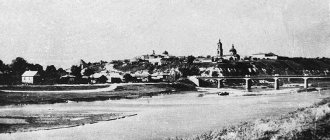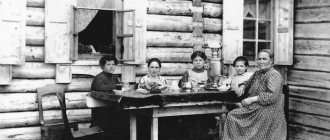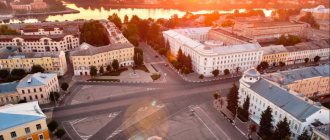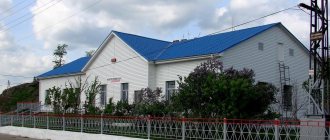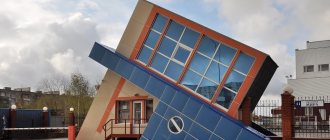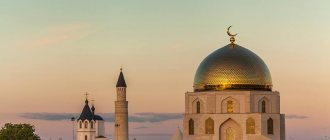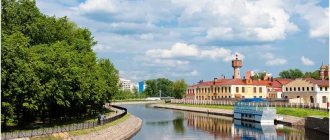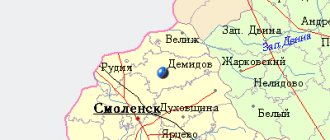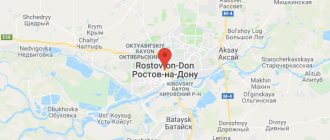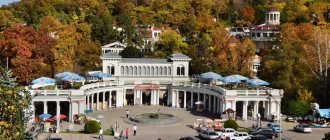The small quiet town of Roshal is located not far from the capital of the Russian state, Moscow, in the Meshcherskaya lowland.
The city stands on the beautiful Voymega River near Moscow and its population does not exceed twenty-two thousand people.
Despite its small size, the city of Roshal has an interesting history of foundation and development, which you can briefly get acquainted with in this article.
Milestone of the founding of the city
Roshal is one of the youngest urban settlements in Russia, since it was founded at the dawn of the twentieth century and until 1914 in its place there were forest jungles, swamps, and uncultivated arable land.
All these lands, which were called Krestovy Ford at that time, belonged to Pavel Blinov, the wealthy owner of the Misheron glass factory.
In 1914, Blinov sold the lands of Cross Ford to the wealthy shareholder Baranovsky, who decided to build a gunpowder production plant in the tract.
By 1916, the plant was erected and began its work, and around it a workers’ settlement grew and expanded, which was called in the old fashioned way Krestovy Ford.
The workers' settlement will change its name and acquire the modern name "Roshal" a year after the revolutionary uprising of 1917.
At the meeting, the plant workers will decide to name their village in honor of the famous revolutionary figure Semyon Roshal, and this name will remain with the village to this day.
Roshal received city status shortly before the start of World War II, in 1940.
Roshal: Krestov Brod and megaliths on the far edge of the Moscow region
Second Petersburg
The urban district of Roshal is located on the Voymega River, 156 kilometers east of Moscow on the territory of the unique Meshchera region. This year, a bronze model of the historical center of the city appeared on the central street of Roshal - this is an improvement project that is planned to be implemented.
Legend says that the path of the first Baptist of Rus', Andrew the First-Called, ran through ancient Meshchera. These events are reflected in the name of the area Krestov Brod. It is known from the chronicles: in the old days there was a monastery of the Nativity of John the Baptist and the palace of the princes of Ryazan. There is a version that it was in this monastery that Ivan the Terrible himself stopped for night prayer during his campaign against Kazan. Roshal was built on the lands of the legendary tract in the 20th century.
The memorial is part of the pedestrian zone. It was made according to the type of squares in St. Petersburg. A rostral column, granite vases and benches with griffins were installed here, and the historical paving stones were restored.
The place for installing the bronze model was not chosen by chance, since it was here that the first office, store, train station, and club appeared in the city. And it is from this place that the route “Through the historical center of the city” will begin. The model shows a new, well-appointed Roshal - with sports and children's playgrounds, craft rows and even an amphitheater. The pride of the townspeople will be the Krestov Brod resort. According to the architect Konstantin Elikhov, it is assumed that the center will be a temple, at the base there will be art and local history museums of the Meshchera region, the territory will be landscaped, canals will appear - nature allows you to create shallow canals, as in St. Petersburg. Tourists who have visited Roshal have already appreciated the magnificent plans of the designers.
Address: Kosyakova street.
Park Krestov Brod
The reconstructed cultural and recreational park “Krestov Brod” has become a place of attraction for tourists. Here is an area for newlyweds with a labyrinth of plants, romantic benches in the shape of swans and air swings. On the central alley, ending with a round platform with a descent to the river, there are flowerpots made of granite chips and benches, two round reservoirs connected by an openwork bridge.
| Two thousand new trees have been planted, alternating with relict pine trees and 100-year-old birch trees. |
The uniqueness of the park recreation area is the “Park of Megaliths” complex. It includes more than ten structures, modeled after those located on the territory of the Russian Plain and the European North. Here you can see the legendary boulders of Rurik, Sudbina, Svyatogor, the wave stone and others. They were discovered in the surrounding forests during many years of expeditionary searches. The central place in the megalithic complex is occupied by the “Circular Observatory” of 24 stones and boulders. This year, the “Park of Megaliths” complex was replenished with three new dolmens similar to the seids of the Kola Peninsula. They came from the Caucasus Mountains. The unusual labyrinths located in the park on the side of Kosyakova Street are copies of the famous labyrinths of Zayatsky Island in the Solovetsky archipelago. There are two labyrinths: male and female. They are distinguished by their pyramid and pit in the center and size. A black dugout boat is installed nearby. The ancestors of the inhabitants of Meshchera traveled on such boats. The oldest boat was found near Lake Voymezhnoe, at the source of the Voymega River.
Location: on the border of the urban and natural environment.
Memorial "Eternal Flame"
The Eternal Flame Memorial in memory of the Roshal soldiers who fought for their Motherland is another place that travelers to Roshal should definitely visit. On one side of the colonnade are the names of Roshal residents who fought on the fronts of the First World War (according to the city archive, these are 880 people), on the other - the names of those who died on the fronts of the Great Patriotic War (1,145 people). Different sides of the colonnade will also be distinguished by different symbols of the eras: St. George's crosses, stars of Glory and two bronze reliefs (the Peskar submarine and the famous BM-13 rocket artillery combat vehicle - "Katyusha"). The images for the bas-reliefs were not chosen by chance: in the city archive there are the names of the sailors who served on the Peskar submarine, and the ballistic gunpowder developed by the engineer, founder of the gunpowder factory Sergei Brouns and a group of scientists was used in the manufacture of charges for the legendary Katyushas.
Nearby, on a pedestal there is a BRDM-2 vehicle (armored reconnaissance and patrol vehicle) - a monument to internationalist soldiers, and on a white granite cube are carved the names of participants in local wars and conflicts and a poem by a local poet dedicated to the defenders of the Fatherland. In the future, the entire structure will be connected by three anti-tank hedgehogs - this is the symbol of the Roshal Defense Plant, which supplied the front with gunpowder.
Address: Kosyakova street.
In honor of the gunpowder factory
Tourists in Roshal should definitely visit the park dedicated to the 100th anniversary of the founding of the Vladimir Gunpowder Factory and the settlement attached to it. The appearance of the plant (later the Roshal Chemical Plant) is associated with the fleet of the Russian Empire. The monument, installed in the park, is made in the form of a nine-meter rostral column made of Baltic granite with a wreath of Glory in the form of two crossed admiral's anchors. The author of the project is architect Konstantin Elikhov, the granite pedestal and column were made by a master from St. Petersburg, and the wreath of Glory and other bronze details were made by Moscow architect Alexander Mironov. There are two memorial plaques on the stele. One of them with the text of a telegram dated May 4, 1915, to the Minister of the Navy Ivan Grigorovich from the plant employees on the day of the official foundation of the building.
Address: Roshal, Kosyakova street.
The House of Culture is always full
In the House of Culture named after A.A. Kosyakova is always sold out. Various events are held here: festivals, creative evenings, exhibitions, concerts, literary and musical meetings, competitions, master classes. Guests of the cultural center are people from different cities not only in the Moscow region, but also from other regions of Russia. Everyone will find something interesting for themselves. For example, you can look at the exhibition “Items of Russian Antiquity”, learn the history of the appearance of the spinning wheel and spindle, cast iron and grip, samovar and coal iron and other items that our ancestors used in everyday life.
An exhibition of works by the costume designer of the House of Culture Larisa Karpova was held here; costumes, kokoshniks, crafts, patchwork creativity and much more were presented. Recently, several interesting exhibitions were held, conveying local flavor and presenting products of folk and applied art.
Address: Roshal, Kosyakova street, house No. 7.
| Phone number. The event schedule can be found on the Palace of Culture website. |
The material was prepared by Orekhovo-Zuevksogo news agency correspondent Marina Evgenieva.
Information and photos from open sources.
***
“Roshal is already a park city, there will be more in the future. There are solutions here that are not even available in big cities. Every year this distant city of the Moscow region becomes more comfortable, more beautiful, and more attractive for citizens and tourists,” said Moscow Region Governor Andrei Vorobyov.
Source:
https://inorehovo.ru/novosti/nashi-sosedi/roshal-krestov-brod-i-megality-na-dalnem-krayu-podmoskovya
Roshal military
The city of Roshal, like other cities of Russia, did not stand aside during the Great War: more than a thousand Roshal residents went to the front and gave their lives for peace and tranquility in their native land.
Two local natives, Veniamin Gusev and Nikolai Kochetkov, received the highest award for courage - the title of Hero of the Soviet Union, and Rosha resident Pavel Yudin became a holder of the Order of Glory of the first, second and third degrees.
During the war, the plant was evacuated from Roshal, but by 1942 it was returned from evacuation, restored and started producing products needed for the front.
The Roshals performed feats not only on the battlefields, but also while working for victory.
More than three thousand Roshal residents and plant workers received various awards for their dedicated work.
Climate
| Climate of Roshal | |||||||||||||
| Index | Jan. | Feb. | March | Apr. | May | June | July | Aug. | Sep. | Oct. | Nov. | Dec. | |
| Absolute maximum | +5 | +6 | +15 | +27 | +33 | +36 | +38 | +36 | +30 | +25 | +14 | +7 | |
| Average temperature, °C | −11 | −10,1 | −4,8 | +4,2 | +12,2 | +15,9 | +17,6 | +15,8 | +10,3 | +3,9 | −2,2 | −7,7 | |
| Absolute minimum, °C | −45 | −42 | −34 | −20 | −8 | −4 | +2 | −1 | −7 | −22 | −35 | −40 | |
| Precipitation rate | 30/27 | 25/24 | 30/27 | 33/34 | 45/41 | 65/60 | 86/75 | 77/67 | 53/49 | 49/48 | 37/36 | 37/36 | |
The absolute maximum (+38°C) was observed in August 1936, the absolute minimum (-45°C) in January 1940 and 1978. [22]
July is absolutely frost-free. In the remaining months of summer, isolated frosts are possible. The intra-annual variation of soil surface temperature follows the variation of air temperature. The maximum soil freezing depth is 127 cm (01/31/1979).
Climatic conditions in the city are generally favorable for the successful development and growth of the main types of tree plantations, growing early potatoes and early spring vegetables.
Economics[ | ]
Until the mid-90s, the main taxpayer and city-forming enterprise was the State Unitary Enterprise PA Roshalsky Chemical Plant named after. A. A. Kosyakova. The once advanced gunpowder factory, then a chemical plant with 25 workshops, legally existed until October 12, 2006 under external management. When the plant was liquidated, small industries were formed, inheriting the remains of chemical production. A small part of the former production continues to be used by several - ether production, Roshalsky Chemical CJSC - de-icing reagents and auto chemicals, Roshalsky Varnishes and Paints Plant LLC, Roshalsky Fluoroplastic Products Plant LLC, Roshalsky Experimental Machines Plant LLC, Roshalsky Plasticizers Plant LLC ", LLC "RIF "Amethyst", LLC "Sokol-R", LLC "Sintez-L", LLC "Khimtekh-R", LLC "ProfLing", LLC "Irtrans-ZEM", LLC "Roshalsky paint and varnish", LLC "Roshalsky industrial park”, on the basis of which the Progress waste processing complex is located[40].
The city's industry is also represented by transport enterprises (Roshalsky branch of the Shatursky PATP), electric power industry (Roshalsky production department of the Shatursky branch of JSC Mosoblenergo, as well as the Territorial Administration of JSC Mosenergosbyt), gas industry (Roshalsky AEU of the Shatursky Distribution Zone of the Vostok branch of the State Unitary Enterprise MO Mosobgaz) and others.
Small businesses play a significant role in the city's economy. Retail outlets have been replaced by modern retail chains with a wide range of goods and services: Pyaterochka, Magnit, Dixy, Krasnoe and Beloe, Fix Price.
There is also a bus station, a hotel, pharmacies, hairdressers, a city bathhouse, banks, post offices, cafes, automatic telephone exchanges, a city market, gas stations, etc. in Roshal.
Content
- 1 Geography
- 2 History 2.1 First settlements
- 2.2 Krestov Brod
- 2.3 After the October Revolution
- 2.4 Modern history
- 5.1 Preschool education
- 13.1 Telephone communication
Links
| External images | ||||||
| ||||||
Communications and Internet[ | ]
Telephone communication[ | ]
Telephone communications are provided by two operators: JSC Rostelecom and LLC Altes-R. Both companies provide DSL and broadband Internet throughout the city.
Mobile communications[ | ]
- MTS, MegaFon, Beeline (GPRS/EDGE//LTE)
- "Tele2"(/LTE)
- Skylink (LTE)
Television[ | ]
Within the urban settlement (Botino village) there is a television transmission center (RTPS No. 3 of the Moscow radio system) broadcasting in digital format from both multiplexes.
Digital television RTRS:
- RTRS-1
- RTRS-2
Cable television LLC "Etron", which rebroadcasts television programs and also produces the local channel "Vesti Roshalya".
An excerpt characterizing Roshal (city)
– Didn’t you sleep? “No, I didn’t sleep,” said Princess Marya, shaking her head negatively. Unwittingly obeying her father, she now, just as he spoke, tried to speak more with signs and seemed to also be moving her tongue with difficulty. - Darling... - or - friend... - Princess Marya could not make out; but, probably, from the expression of his gaze, a gentle, caressing word was said, which he never said. - Why didn’t you come? “And I wished, wished for his death! - thought Princess Marya. He paused. “Thank you... daughter, friend... for everything, for everything... forgive... thank you... forgive... thank you!..” And tears flowed from his eyes. “Call Andryusha,” he suddenly said, and something childishly timid and distrustful was expressed in his face at this demand. It was as if he himself knew that his demand made no sense. So, at least, it seemed to Princess Marya. “I received a letter from him,” answered Princess Marya. He looked at her with surprise and timidity. - Where is he? - He is in the army, mon pere, in Smolensk. He was silent for a long time, closing his eyes; then in the affirmative, as if in response to his doubts and to confirm that he now understood and remembered everything, he nodded his head and opened his eyes. “Yes,” he said clearly and quietly. - Russia is dead! Ruined! - And he began to sob again, and tears flowed from his eyes. Princess Marya could no longer hold on and cried too, looking at his face. He closed his eyes again. His sobs stopped. He made a sign with his hand to his eyes; and Tikhon, understanding him, wiped away his tears. Then he opened his eyes and said something that no one could understand for a long time, and finally only Tikhon understood and conveyed it. Princess Marya looked for the meaning of his words in the mood in which he spoke a minute before. She thought that he was talking about Russia, then about Prince Andrei, then about her, about his grandson, then about his death. And because of this she could not guess his words. “Put on your white dress, I love it,” he said. Realizing these words, Princess Marya began to sob even louder, and the doctor, taking her by the arm, led her out of the room onto the terrace, persuading her to calm down and make preparations for departure. After Princess Marya left the prince, he again started talking about his son, about the war, about the sovereign, twitched his eyebrows angrily, began to raise a hoarse voice, and the second and final blow came to him. Princess Marya stopped on the terrace. The day had cleared up, it was sunny and hot. She could not understand anything, think about anything and feel anything except her passionate love for her father, a love that, it seemed to her, she did not know until that moment. She ran out into the garden and, sobbing, ran down to the pond along the young linden paths planted by Prince Andrei. - Yes... I... I... I. I wanted him dead. Yes, I wanted it to end soon... I wanted to calm down... But what will happen to me? “What do I need peace of mind when he’s gone,” Princess Marya muttered aloud, walking quickly through the garden and pressing her hands on her chest, from which sobs were convulsively escaping. Walking around the garden in a circle that led her back to the house, she saw M lle Bourienne (who remained in Bogucharovo and did not want to leave) and an unfamiliar man coming towards her. This was the leader of the district, who himself came to the princess in order to present to her the necessity of an early departure. Princess Marya listened and did not understand him; she led him into the house, invited him to have breakfast and sat down with him. Then, apologizing to the leader, she went to the door of the old prince. The doctor with an alarmed face came out to her and said that it was impossible. - Go, princess, go, go! Princess Marya went back into the garden and sat down on the grass under the mountain near the pond, in a place where no one could see. She didn't know how long she was there. Someone's running female steps along the path made her wake up. She got up and saw that Dunyasha, her maid, who was obviously running after her, suddenly, as if frightened by the sight of her young lady, stopped. “Please, Princess... Prince...” Dunyasha said in a broken voice. “Now, I’m coming, I’m coming,” the princess spoke hastily, not giving Dunyasha time to finish what she had to say, and, trying not to see Dunyasha, she ran to the house. “Princess, God’s will is being done, you must be ready for anything,” said the leader, meeting her at the front door. - Leave me. It is not true! – she angrily shouted at him. The doctor wanted to stop her. She pushed him away and ran to the door. “Why are these people with frightened faces stopping me? I don't need anyone! And what are they doing here? “She opened the door, and the bright daylight in this previously dim room terrified her. There were women and a nanny in the room. They all moved away from the bed to give her way. He was still lying on the bed; but the stern look of his calm face stopped Princess Marya at the threshold of the room. “No, he’s not dead, that can’t be! - Princess Marya said to herself, walked up to him and, overcoming the horror that gripped her, pressed her lips to his cheek. But she immediately pulled away from him. Instantly, all the strength of tenderness for him that she felt in herself disappeared and was replaced by a feeling of horror at what was in front of her. “No, he is no more! He is not there, but there is right there, in the same place where he was, something alien and hostile, some terrible, terrifying and repulsive secret... - And, covering her face with her hands, Princess Marya fell into the arms of the doctor who supported her. In the presence of Tikhon and the doctor, the women washed what he was, tied a scarf around his head so that his open mouth would not stiffen, and tied his divergent legs with another scarf. Then they dressed him in a uniform with orders and placed the small, shriveled body on the table. God knows who took care of it and when, but everything happened as if by itself. By nightfall, candles were burning around the coffin, there was a shroud on the coffin, juniper was strewn on the floor, a printed prayer was placed under the dead, shriveled head, and a sexton sat in the corner, reading the psalter. Just as horses shy away, crowd and snort over a dead horse, so in the living room around the coffin a crowd of foreign and native people crowded - the leader, and the headman, and the women, and all with fixed, frightened eyes, crossed themselves and bowed, and kissed the cold and numb hand of the old prince. Bogucharovo was always, before Prince Andrei settled there, an estate behind the eyes, and the Bogucharovo men had a completely different character from the Lysogorsk men. They differed from them in their speech, clothing, and morals. They were called steppe. The old prince praised them for their tolerance at work when they came to help with cleaning in the Bald Mountains or digging ponds and ditches, but did not like them for their savagery. Prince Andrei's last stay in Bogucharovo, with its innovations - hospitals, schools and ease of rent - did not soften their morals, but, on the contrary, strengthened in them those character traits that the old prince called savagery. There were always some vague rumors going around between them, either about the enumeration of all of them as Cossacks, then about the new faith to which they would be converted, then about some royal sheets, then about the oath to Pavel Petrovich in 1797 (about which they said that back then the will came out, but the gentlemen took it away), then about Peter Feodorovich, who will reign in seven years, under whom everything will be free and it will be so simple that nothing will happen. Rumors about the war in Bonaparte and his invasion were combined for them with the same unclear ideas about the Antichrist, the end of the world and pure will. In the vicinity of Bogucharovo there were more and more large villages, state-owned and quitrent landowners. There were very few landowners living in this area; There were also very few servants and literate people, and in the life of the peasants of this area, those mysterious currents of Russian folk life, the causes and significance of which are inexplicable to contemporaries, were more noticeable and stronger than in others. One of these phenomena was the movement that appeared about twenty years ago between the peasants of this area to move to some warm rivers. Hundreds of peasants, including those from Bogucharov, suddenly began to sell their livestock and leave with their families somewhere to the southeast. Like birds flying somewhere across the seas, these people with their wives and children strove to the southeast, where none of them had been. They went up in caravans, bathed one by one, ran, and rode, and went there, to the warm rivers. Many were punished, exiled to Siberia, many died of cold and hunger along the way, many returned on their own, and the movement died down by itself just as it had begun without an obvious reason. But the underwater currents did not stop flowing in this people and were gathering for some new force, which was about to manifest itself just as strangely, unexpectedly and at the same time simply, naturally and strongly. Now, in 1812, for a person who lived close to the people, it was noticeable that these underwater jets were doing strong work and were close to manifestation.
Population[ | ]
| Population | |||||||
| 1926[11] | 1931[11] | 1939[12] | 1959[13] | 1967[11] | 1970[14] | 1979[15] | 1989[16] |
| 5400 | ↗9900 | ↗18 620 | ↗21 819 | ↗24 000 | ↗25 271 | ↘25 256 | ↘23 956 |
| 1992[11] | 1996[11] | 1998[11] | 2000[11] | 2001[11] | 2002[17] | 2003[11] | 2005[11] |
| ↘23 700 | ↘22 800 | ↘22 600 | ↘22 500 | ↗22 700 | ↘22 407 | ↘22 400 | ↘22 300 |
| 2006[11] | 2007[11] | 2008[11] | 2009[18] | 2010[19] | 2011[11] | 2012[20] | 2013[21] |
| ↘22 000 | ↘21 600 | ↘21 400 | ↘21 109 | ↗21 272 | ↗21 300 | ↘21 035 | ↗21 132 |
| 2014[22] | 2015[23] | 2016[24] | 2017[25] | 2018[26] | 2019[27] | 2020[1] | |
| ↗21 186 | ↘21 167 | ↘20 793 | ↘20 590 | ↘20 418 | ↘20 225 | ↘20 022 | |
As of January 1, 2022, in terms of population, the city was in 669th place out of 1,116[28]cities of the Russian Federation[29].
